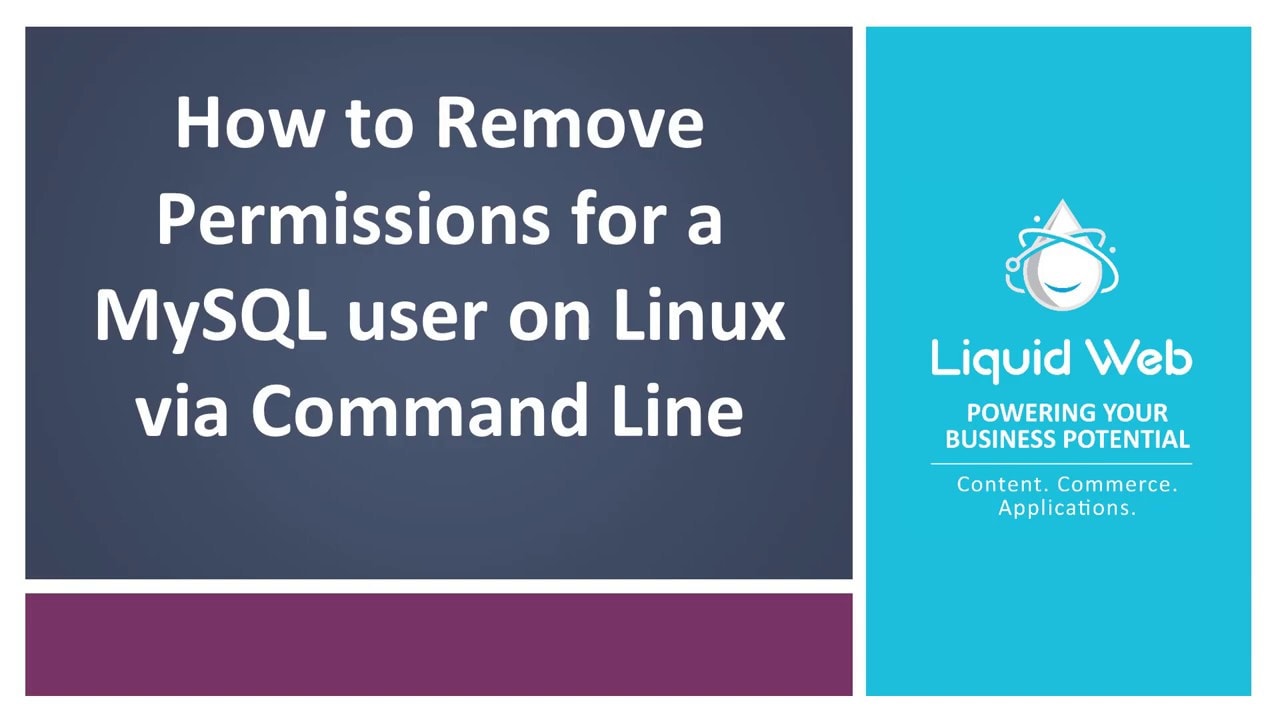Category: Tutorials
The Liquid Web knowledgebase provides information on thousands of topics surrounding every aspect of hosting, Linux, Windows, and countless other article types that help boost your Liquid Web experience!
Remove Permissions for a MySQL User on Linux via Command Line
MySQL via Command Line 101: Basic Database Interaction

- These instructions are intended for revoking a MySQL user permissions on Linux via the command line
- I’ll be working from a Liquid Web Core Managed CentOS 6.5 server, and I'll be logged in as root.
First we'll log in to the MySQL server from the command line with the following command:
Dogecoin (Ɖ) is one of the many open-source cryptocurrencies that has penetrated the post-Bitcoin marketplace. As of February 2014, Dogecoin rates fifth (5th) in market capitalization among Bitcoin, Litecoin, and all other cryptocurrencies (source). This particular coin’s name is based on the “doge” meme, a slang term for “dog”.
How To Install Cassandra on CentOS 6
Apache Cassandra is a NoSQL database intended for storing large amounts of data in a decentralized, high availability server cluster. NoSQL refers to a database with a data model other than the tabular relations used in relational databases such as MySQL, PostgreSQL, and Microsoft SQL.
If you run a cPanel server, and need to upgrade your Apache or PHP version, cPanel provides the Easyapache tool to make these updates a breeze. While it can be run from WHM, it is generally preferred to run it from the command line.
How To: Create a Cloud Load Balancer
In the past, load balanced setups have required dedicated networking equipment, which takes time and expertise to set up correctly. Liquid Web’s Cloud Load Balancer makes setup and configuration of a load balancer as easy as filling out a web form.
How to Set Up and Use Cloud Block Storage
What is Cloud Block Storage?
Cloud Block Storage provides additional hard drive space for your Private Cloud Hosted Server with just a few clicks. The space is not pre-formatted but rather, it is a raw block device. The simplicity of providing a raw block device on the cloud means that you can mount and format the space on your server however you would like, with whatever filesystem is appropriate for your needs. This does entail a small amount of work getting the space into a usable state which we will address in this article.
On CNAMEs and CDNs
Liquid Web’s Content Delivery Network is a fantastic way to get elements of your site to your global customers in a timely manner. As part of the set up process, you may need to add a Canonical Name (CNAME) record to your domain’s DNS.
Featured Freeware highlights some of the Liquid Web staff's favorite free software. This week we are covering a treasured favorite, MTR.
Linux Runlevels Explained
A runlevel is one of the modes that a Unix-based, dedicated server or a VPS server OS will run on. Each runlevel has a certain number of services stopped or started, giving the user control over the behavior of the machine. Conventionally, seven runlevels exist, numbered from zero to six.
What is CSF?
CSF or Config Server Firewall is an alternative firewall to APF.
Our Sales and Support teams are available 24 hours by phone or e-mail to assist.

